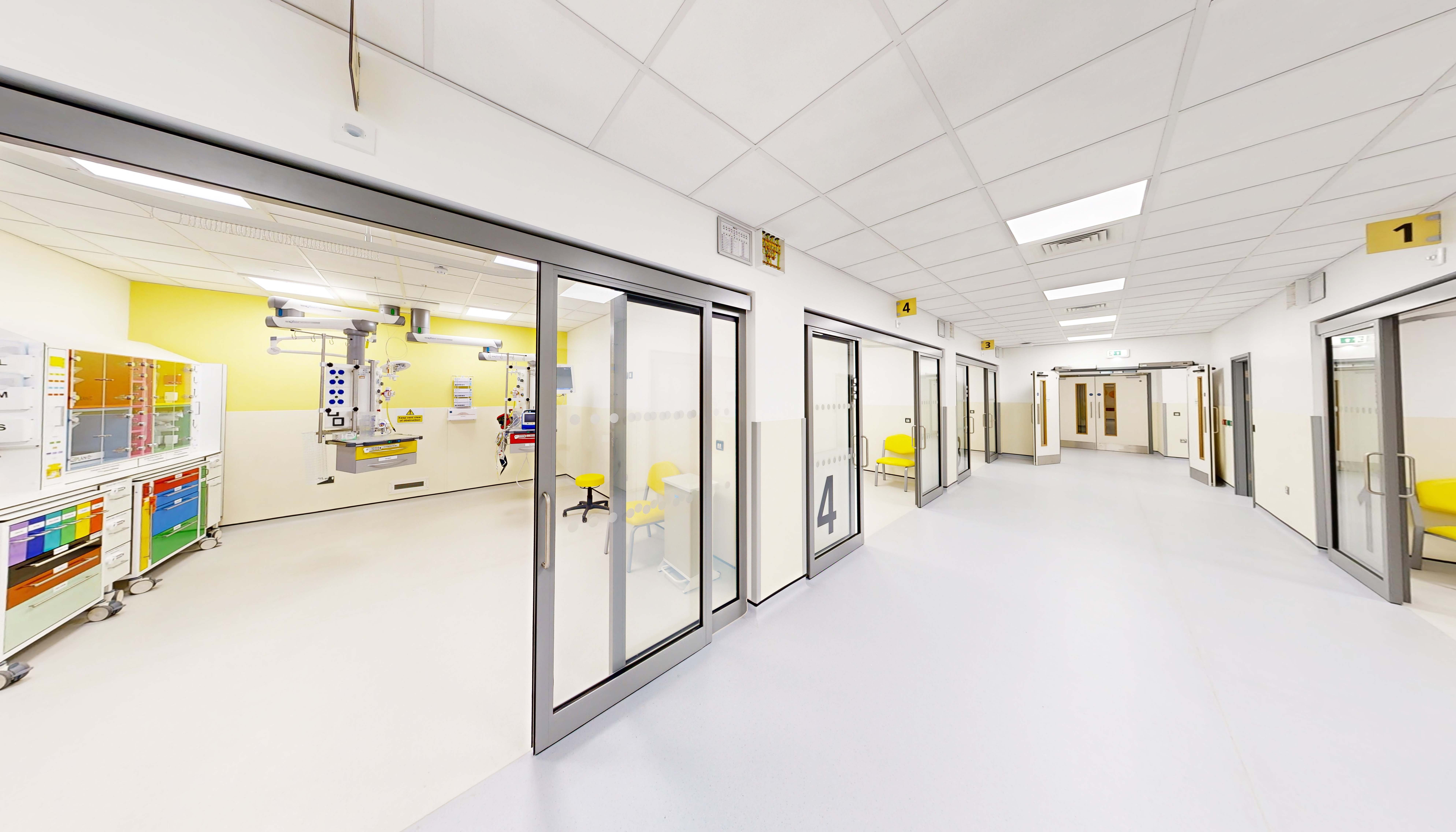
Emergency department transformation is complete after three-year project
A three-year, multi-million-pound expansion of emergency departments across east Kent finished this week as the final area was handed to clinical teams.
The two new resuscitation bays at the Queen Elizabeth The Queen Mother Hospital in Margate were the last areas to be finished as part of the project, funded by the NHS nationally.
They take the number of resus bays in the new, expanded department to seven – each with sliding doors to ensure privacy and dignity and to reduce the risk of infections spreading.
At QEQM, the department was remodelled with a two-storey expansion into a former courtyard, providing dedicated space upstairs for staff to work, learn and rest.
Downstairs, there is a new rapid assessment and treatment unit, dedicated mental health facilities, new children’s emergency department, new entrance and waiting area, new treatment area for adults and a new relatives’ room.
It will help the team care for the thousands of patients who come through the doors each month.
Joanna Williams, head of nursing for urgent and emergency care at the QEQM, said: “We are thrilled to bits with the new department, and it is a joy to work in.
“Each area has been designed with staff and patients in mind, to ensure everything we need is close at hand and the patients are comfortable.
“It has been a long road and I’m very grateful to our fantastic staff who have continued to do their best for our patients as our department was remodelled around us.”
The work at QEQM has been carried out by WWMartin.
At the William Harvey Hospital, there is a large new ambulance entrance, nine resuscitation bays, dedicated areas for patients with mental health needs and 12 rapid assessment and treatment bays. The expansion also created a new children’s area, new treatment area for adults and new staff facilities. The work on both sites cost £30million.
Lead nurse for trauma Fernando Carballido worked with teams on the design for both sites and played a key role in ensuring the spaces were set up for staff and patients.